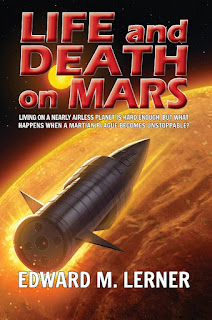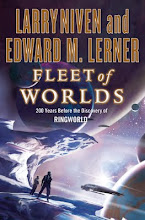I'm newly home from Chicago and a wonderful experience: SFWA's annual -- and, as it happened, the 50th --
Nebula Awards weekend. SFWA, of course, is the
Science-fiction and Fantasy Writers of America. (In this instance, not a typo. When fantasy authors demanded equal billing in the organization's name, maintaining the historical acronym and logo required that odd mixed capitalization.) The Nebulas, awarded annually by SFWA for specific works of fiction, are among the highest honors in the genre.
 |
| Photo from Locus |
An even higher honor is the Solstice Award, "granted in recognition of the positive impact and
influence the recipients and their work have had on the science fiction
and fantasy genres."
This year's honorees were Joanna Russ and Stanley Schmidt. Stan, of course, was the long-time editor of
Analog. Over the years I've come to know Stan as a mentor, colleague, and friend. It was great to see him honored.
 |
| Larry & Ed at Nebula Awards (2015) |
But the highest SFWA recognition, IMO, is the SFWA Grandmaster Award. This year's honoree was Larry Niven, recognized "for his invaluable contributions to the field of science fiction and fantasy" (he writes both). Larry is my frequent collaborator and friend, and I was invited to join the panel at a Niven-retrospective session and to contribute a written appreciation. I was happy to oblige, and here's what I wrote.


































